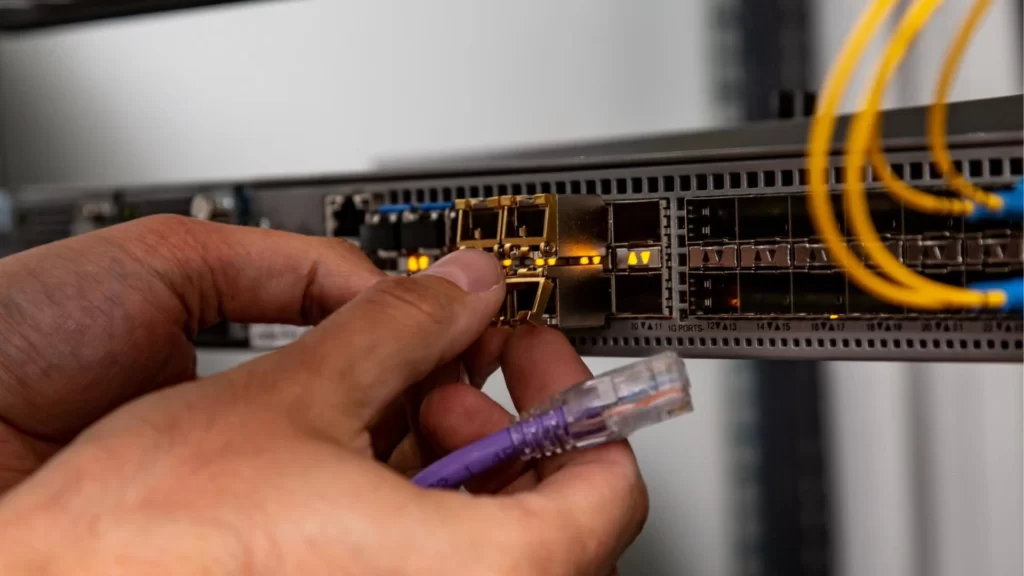A Beginner’s Guide to What Hardware Security Modules (HSM) is about

Delve into the tech universe, and you’ll inevitably encounter those three intriguing letters – HSM. In this beginner’s guide, we’re embarking on a journey to unravel the secrets of Hardware Security Modules, those digital guardians that stand as stalwarts in data protection. So, fasten your seatbelts, and let’s navigate the fascinating landscape of HSMs!
What is HSM?
What is HSM?
At its core, HSM stands for Hardware Security Module. Imagine these modules as the superheroes dedicated to safeguarding your sensitive information, akin to digital vaults that stand resilient against the ever-present threats of the cyber world. Let’s dig deeper to understand the intricacies of these digital guardians.
Understanding the Basics
Understanding the Basics
HSMs are no ordinary devices – they are specialised tools meticulously crafted to manage and safeguard cryptographic keys. These keys, pivotal in securing communication, authenticating users, and ensuring data integrity, make HSMs the guardians of the digital realm. Picture them as sentinels, poised to defend against potential threats in the digital landscape.
Why Do You Need HSM?
Why Do You Need HSM?
In the dynamic arena of cybersecurity, HSMs emerge as indispensable allies. Here’s why you should consider integrating them into your digital arsenal:
Robust Key Management
At the heart of HSMs lies an unparalleled mastery of cryptographic key management. These modules serve as custodians, generating and storing keys with surgical precision and orchestrating their use with a level of security that withstands the most sophisticated cyber threats. In a digital landscape teeming with potential vulnerabilities, HSMs are unwavering gatekeepers, thwarting unauthorised access and fortifying the digital fortress.
Enhanced Data Security
The symphony of data security reaches new heights with HSMs. Through an intricate dance of encryption and decryption performed within the confines of the module, HSMs ensure that sensitive information remains an enigma to all but authorised users. It’s not merely about safeguarding data; it’s about orchestrating a virtuoso performance in which every note of information is rendered impervious to prying eyes, thus elevating data security to an art form.
Regulatory Compliance
In an era where compliance with data protection regulations is non-negotiable, HSMs emerge as beacons of assurance. Whether it’s the General Data Protection Regulation (GDPR), the Health Insurance Portability and Accountability Act (HIPAA), or any other regulatory framework, these modules seamlessly navigate the complex seas of compliance. HSMs become the compass guiding organisations toward adherence to standards, ensuring that data protection is not merely an aspiration but an integral part of the operational ethos.
Operational Continuity
Beyond the realms of encryption and compliance, HSMs contribute to operational continuity. By providing a secure environment for cryptographic operations, these modules become the bedrock upon which businesses can confidently build and innovate. The continuity of operations is not just a byproduct; it’s a deliberate outcome of the seamless integration of HSMs into the organisational fabric.
Using HSMs transcends the binary realm of ones and zeros. It is a narrative of security, compliance, and operational resilience, where HSMs emerge not just as technological tools but as integral components of a holistic strategy to safeguard data integrity, confidentiality, and availability in the digital age. Embrace HSMs – the silent sentinels standing guard against the ceaseless tides of cyber threats.
How HSMs Work
How HSMs Work
Having established the ‘what’ and ‘why’ of Hardware Security Modules (HSMs), let’s delve into the core: understanding ‘how’ these devices function. This exploration is crucial for gaining insight into their pivotal role in the ever-evolving landscape of cybersecurity.
Key Management
At its essence, an HSM is a specialised hardware device meticulously crafted to manage cryptographic keys and execute various cryptographic operations with an unwavering focus on security. The brilliance of HSMs lies in their adeptness at fortifying digital landscapes by safeguarding sensitive data and ensuring the integrity of cryptographic processes.
Centralised Control
A fundamental aspect of HSM operation is its role in key management. These modules generate, store, and shield cryptographic keys, ensuring their confidentiality and integrity. This centralised control over keys forms the bedrock of securing digital transactions, communications, and data storage.
Distinct from Software
Distinguishing themselves from traditional software-based solutions, HSMs leverage dedicated hardware to provide an additional layer of defence against diverse cyber threats. This approach bolsters overall security and erects a formidable barrier against potential vulnerabilities associated with software-centric alternatives.
Cryptographic Operations
In the realm of cryptographic operations, HSMs shine in executing these functions efficiently and securely. Whether tasked with encrypting sensitive data, generating digital signatures, or validating authentication credentials, HSMs perform with reliability and are tamper-resistant, both of which are crucial in critical applications.
Strategic Deployment
The orchestration of how HSMs work emphasises a commitment to robust security practices. As organisations navigate an increasingly complex threat landscape, deploying HSM becomes indispensable for fortifying digital assets against malicious actors.
Comprehending the intricacies of HSM operations is essential for anyone seeking a profound understanding of cybersecurity. Deploying these hardware security modules transcends mere technological considerations; it signifies a strategic investment in safeguarding sensitive information, ensuring the integrity of cryptographic processes, and fortifying the overall security posture in an interconnected digital world.
Choosing the Right HSM
Choosing the Right HSM
When navigating the Hardware Security Modules (HSMs), it becomes evident that not all are cut from the same cryptographic cloth. The significance of choosing the right one for your specific needs cannot be overstated. Various factors, from performance and scalability to integration capabilities, should weigh heavily in your decision-making process.
Redundancy Considerations
One critical aspect to ponder is the redundancy of an HSM. Understanding the impact on your operations becomes pivotal in the unfortunate event of an HSM failure. Can the HSM be seamlessly replaced without causing a loss of service? This question is central to maintaining operational continuity.
Backup Assurance
The potential for irrecoverable data loss looms as a persistent concern. It is essential to assess the factors that could lead to such a scenario – from HSM malfunctions to the loss of critical components. By understanding the contingencies in place and evaluating the likelihood of data loss, you can proactively address and mitigate these risks.
Performance Metrics that Matter
Delving into the performance metrics of an HSM is crucial. Assessing factors like processing speed and support for cryptographic algorithms provides insights into the module’s efficiency in handling cryptographic operations. This scrutiny ensures that your chosen HSM aligns with the processing demands of your digital operations.
Scalability for Growth
As your business expands, so does the demand for robust security measures. Opting for an HSM with scalability in mind is paramount. The chosen module should seamlessly grow with your organisation, accommodating increased workloads and evolving security requirements without compromising performance or integrity.
Best Practices for Implementation
Best Practices for Implementation
Efficient implementation of Hardware Security Modules (HSMs) extends beyond a simple plug-and-play scenario; it requires a strategic approach to maximise effectiveness. Consider the following best practices:
Define Clear Policies
Establish comprehensive policies for key management and access control. This foundational step ensures HSMs align seamlessly with your organisation’s security objectives. Clearly defining protocols sets the stage for robust protection against potential threats.
Regular Audits for Proactive Security
Proactively monitor the performance of HSMs through regular audits. This approach enables the early identification and resolution of potential vulnerabilities, preventing them from escalating into significant concerns. Regular assessments contribute to the ongoing optimization of your security infrastructure.
Invest in Employee Training
Elevate your security posture by investing in thorough training for your team in using and maintaining HSMs. A well-trained staff enhances overall security and minimises the risk of human error. Knowledgeable personnel are crucial in ensuring the seamless integration and operation of HSMs within your organisation.
Real-World Applications
Real-World Applications
Let’s delve into tangible examples where HSMs emerge as the unsung heroes of cybersecurity, addressing specific needs across various sectors:
Financial Institutions
HSMs play a pivotal role in securing financial transactions, safeguarding sensitive data such as credit card information, and ensuring the integrity of banking systems. The robust cryptographic capabilities of HSMs contribute significantly to the trust and security associated with financial transactions.
Healthcare Industry
In the healthcare sector, where the confidentiality of patient information is paramount, HSMs serve as guardians of electronic health records. By leveraging advanced encryption and access control mechanisms, HSMs help healthcare organisations meet regulatory requirements and maintain the highest data protection standards.
Government Agencies
Government bodies rely on HSMs to secure sensitive information, including classified documents and citizen data. The stringent security measures provided by HSMs ensure the confidentiality and integrity of critical government data, contributing to national security objectives.
In these real-world scenarios, HSMs emerge as indispensable tools, seamlessly integrating into diverse sectors to provide robust protection against evolving cybersecurity threats.
Emerging Trends in HSM Technology
Emerging Trends in HSM Technology
The Hardware Security Modules (HSMs) landscape is undergoing dynamic transformations as technology advances. Here, we delve into some compelling trends that are shaping the future of HSM technology:
Cloud Integration
HSMs seamlessly integrate with cloud services, marking a significant shift in data security practices. This integration empowers organisations to safeguard their data in traditional on-premises environments and in the expansive realm of cloud computing. The result is a unified and robust approach to data protection that transcends physical boundaries.
Post-Quantum Cryptography
As the era of quantum computing dawns, the vulnerabilities of traditional cryptographic systems become apparent. Recognizing this, HSM technology swiftly adapts to the need for post-quantum cryptography. These cutting-edge HSMs are designed to ensure the resilience of cryptographic keys against the potential threats posed by quantum computers. Essentially, they are future-proofing digital security by staying one step ahead of evolving technologies.
Enhanced Security Protocols
HSMs are continuously evolving to implement enhanced security protocols. This includes advancements in authentication mechanisms, tamper resistance, and secure key management. These measures fortify the integrity of cryptographic operations and provide organisations with a more comprehensive and sophisticated defence against an ever-expanding array of cyber threats.
Diverse Use Cases
The versatility of HSMs is expanding, leading to their integration into diverse use cases beyond traditional encryption and key management. From securing sensitive financial transactions to enabling secure digital identity verification, HSMs are becoming indispensable components in various applications. This diversification highlights the adaptability and reliability of HSMs in meeting the evolving needs of cybersecurity.
Capabilities of Hardware Security Modules (HSM)
Capabilities of Hardware Security Modules (HSM)
In this dynamic landscape of digital security, companies like Netrust play a pivotal role in advancing the capabilities of Hardware Security Modules. Netrust can partner and guide you in navigating the integration of HSMs with cloud services, the imperative shift towards post-quantum cryptography, and implementing enhanced security protocols.
With the knowledge of what HSM is and its evolving capabilities, you can now make informed decisions when fortifying your digital defences. The role of HSMs in cybersecurity will continue to grow alongside technological advancements, and staying vigilant and knowledgeable will be vital to harnessing their full potential.
As we look ahead, let these digital superheroes – the HSMs – stand as unwavering guardians of your digital frontier, ensuring a secure and resilient digital future for individuals and organisations alike, with companies like Netrust leading the way in pioneering advancements in HSM technology.

Contact Us: General enquiries or free consultation
We’re really grateful for giving us a chance to connect with you. Please do not hesitate to ask us anything and we will respond to you asap.

